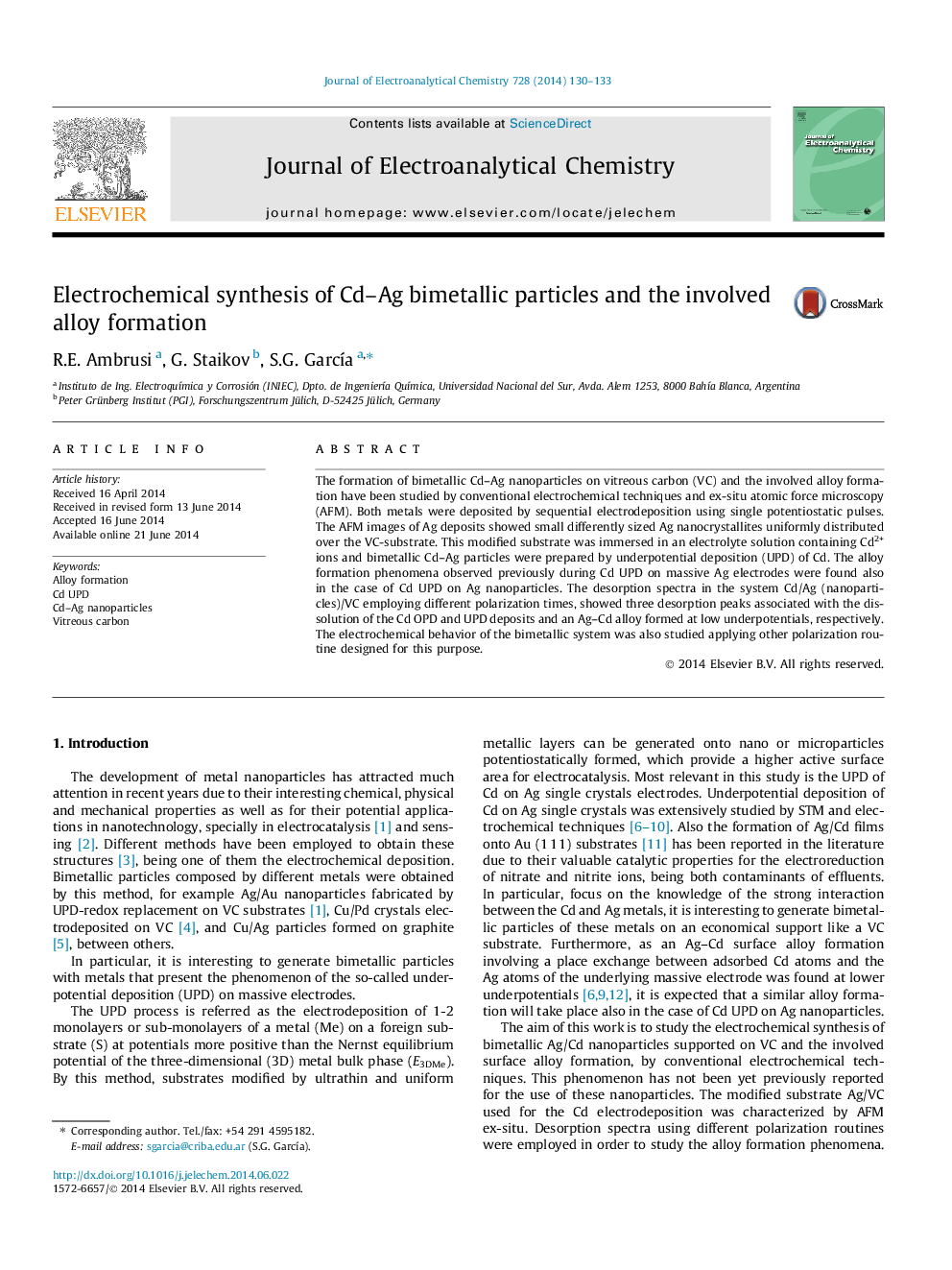| Article ID | Journal | Published Year | Pages | File Type |
|---|---|---|---|---|
| 218732 | Journal of Electroanalytical Chemistry | 2014 | 4 Pages |
•Ag nanoparticles show different adsorption behavior for Cd UPD in relation with single- and poly-crystalline Ag substrates.•The desorption spectra reveal the dissolution of Cd OPD and UPD on the pre-deposited Ag nanoparticles supported on VC.•The alloy formation phenomenon is observed at low underpotentials in the case of Cd UPD on Ag nanoparticles.
The formation of bimetallic Cd–Ag nanoparticles on vitreous carbon (VC) and the involved alloy formation have been studied by conventional electrochemical techniques and ex-situ atomic force microscopy (AFM). Both metals were deposited by sequential electrodeposition using single potentiostatic pulses. The AFM images of Ag deposits showed small differently sized Ag nanocrystallites uniformly distributed over the VC-substrate. This modified substrate was immersed in an electrolyte solution containing Cd2+ ions and bimetallic Cd–Ag particles were prepared by underpotential deposition (UPD) of Cd. The alloy formation phenomena observed previously during Cd UPD on massive Ag electrodes were found also in the case of Cd UPD on Ag nanoparticles. The desorption spectra in the system Cd/Ag (nanoparticles)/VC employing different polarization times, showed three desorption peaks associated with the dissolution of the Cd OPD and UPD deposits and an Ag–Cd alloy formed at low underpotentials, respectively. The electrochemical behavior of the bimetallic system was also studied applying other polarization routine designed for this purpose.
